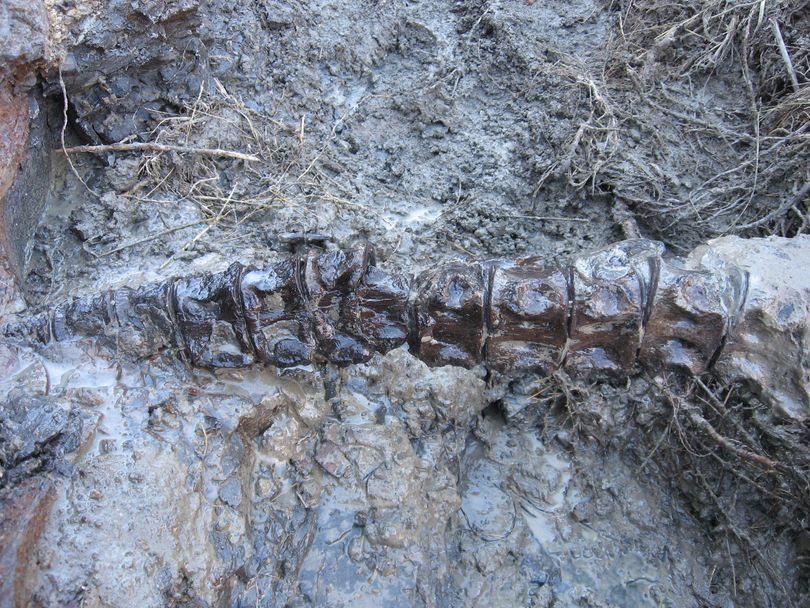Elk elude hunter, but not dino fossil

PALEONTOLOGY -- Montana hunter Dave Bradt, 43, wasn’t able to tag the bull elk he wanted to shoot while bowhunting for elk in the Charles M. Russell National Wildlife Refuge in September. Instead, he found the fossilized remains of an ancient sea creature, according to the Billings Gazette.
“I suppose now I’ll see some paleontologist posing with a record book bull elk,” he joked to outdoor reporter Brett French.
“Finally, the wife and kids are happy with what I brought home,” he said of the photos he returned with.
Read on for details about his find -- likely a plesiosaur that roamed the earth some 75 million years ago.
While stopping along a small stream, Bradt noticed what looked like ribs protruding from a rock. He moved some brush and saw what looked like a spine made of rock. It was a fossilized neck vertebrae.
On his way home from the eight-day hunt, he stopped at the CMR headquarters in Lewistown, Mont., told them what he’d found and also gave them a GPS waypoint. He later e-mailed them copies of the photos he'd snapped.
“People find stuff all the time, but this created excitement from the beginning,” said Beverly Skinner, the CMR wildlife refuge specialist who first talked to Bradt. “Actually it’s not rare to find dinosaur bones on the CMR. But this is a marine reptile. There haven’t been many of them.”
Judging by the photos, Montana State University paleontologist Jack Horner said he thinks the fossil is likely a plesiosaur – a long-necked, four-finned aquatic reptile that once roamed the CMR when it was part of a vast inland sea -- the Cretaceous Seaway of North America -- roughly 75 million years ago. The sea extended from the Arctic to the Gulf of Mexico. Although its boundaries fluctuated, at one time it was a thousand miles wide and spread from Minnesota west to the Rocky Mountain Front.
Plesiosaurs would have roamed the sea much like whales today – breathing air and feeding on fish and other prey.
